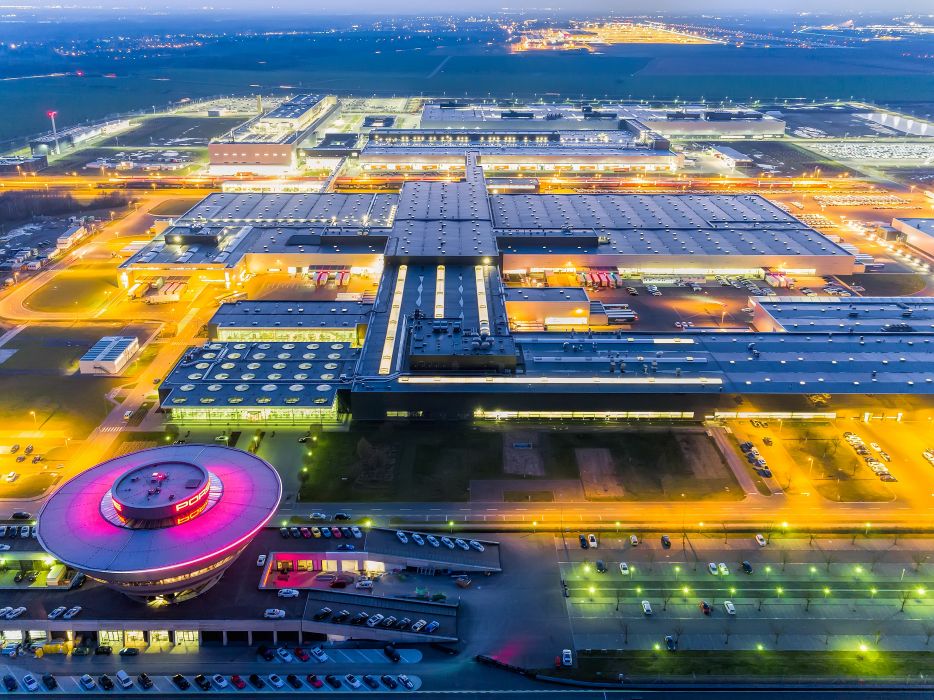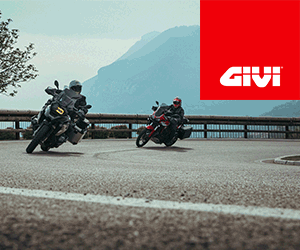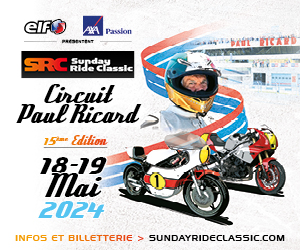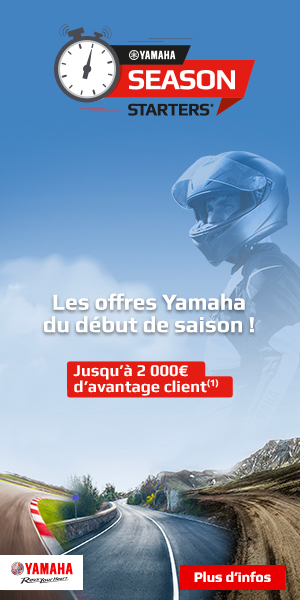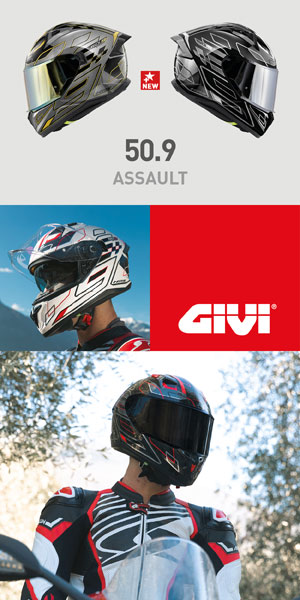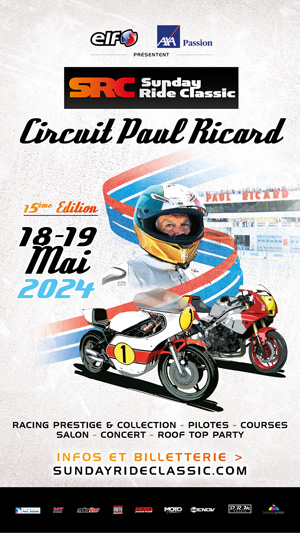First, there was a gate accessible via a dedicated highway ramp. Something like supplier entry.
This door gave access to a rather neat kind of industrial zone, in any case more than the average of its equivalents in China. Beautiful, largely shaded avenues, vast green areas, and, sprinkled throughout this vast space, a multitude of simple but elegant industrial buildings. Nothing very big. It was in fact a village of companies, all closely related to the very particular world of motorcycle racing.
There were all the competition departments of the manufacturers involved in the motorcycle Grands Prix there, but there were also the dedicated services of all the equipment manufacturers, from tire suppliers to the most diverse electronic box manufacturers, including the specialists in the hydraulics, braking, suspensions and all the various but extremely specialized accessories that go into making a racing motorcycle. On the part of the manufacturers, there was real activity in manufacturing racing machines. As far as equipment manufacturers are concerned, it was more a matter of stocks available to the main players.
As with everything else at the complex, security was a constant obsession. Concerning the personnel working here, they could only enter if they were boarded in the specialized shuttles, and of course if they had received the appropriate RFID chips by injection. For equipment, the companies had their own trucks which were not searched, but which were systematically taken care of and escorted by the Chinese police. On the business park, the security patrols were incessant and this was only the tip of the iceberg because the other side of the coin of such concentration was the risk of espionage. This risk had been assumed from the creation of the complex because we wanted to organize things for the motorcycle in the same way as they had ended up being for the Formula 1 automobile where England was the almost obligatory passage for all teams, including Ferrari. The advantages were obvious: everyone had everything at hand…
This protected area was welcoming, but those who frequented it mostly had only a vague idea of what the rest of the complex might be like. They only knew what the media wanted to say about it, which was very little. There was indeed a passage through which the racing machines were transported but it was always those on the other side who came to collect the equipment at the wheel of small electric trucks.
The training center was a separate area and also had its own gate. The traffic there was much less intense than in the previous one, it was limited to the supplies of this rather special campus. Here the students were systematically internal. We trained all the technicians that the racing world needed, so it was of a very high level, very specialized. The best gained access to the complex, the others tried their luck in the company village. The training was of high quality, because it was based on knowledge of the actual race equipment that everyone had on hand. In fact, it was on motorcycles that were not yet really obsolete that we worked here.
We also trained international class pilots. They were the youngest students: we detected them very early and around the age of 12, they joined the center. Obviously the practical work took up the lion's share. Tirelessly, they circled two or three turnstiles under the watchful eye of pilots from older generations. Technical gestures were constantly repeated to become automatic in all circumstances. Through encounters, affinities would appear and former pilots would take young people in whom they believed under their wings and become their mentors. This type of association, although sometimes difficult to accept or even downright ambiguous, had largely proven their worth and we tried to encourage them. Even more than for all other categories of students, the selection was ruthless. The team managers did their “market”, but they only wanted the very best, a tiny minority, and only those gained access to the complex. The others returned to their countries where they formed the backbone of national or continental shows. Since their training included an in-depth look at financial and communications techniques, they generally did quite well. And that was good because it was obvious that they would not have a second chance since absolutely all recruitment at the world level was done in this center. It was contractual.
The third gate was that of the complex itself. All the teams entered in the Grand Prix had their bases here. Each a separate building on each side of the main avenue following the entrance door. All the equipment and all the team administration were grouped there. This artery then transformed into a wide and beautiful road leading to the circuits.
At one time, when we considered the enormity of the costs incurred by moving teams all around the world throughout the Grand Prix season, it was decided that the teams would all remain fixed and concentrated in the same location. Simply, we would approach the circuits: it would be more economically manageable.
Faithful reconstructions of the main circuits of the world were therefore built in this remote place in China. If China had obtained this market, it was not only because of the large spaces available nor because of its immense financial power, it was also and above all because of the recognized meticulousness of its technicians. For the United States, we recreated Laguna Seca and the Daytona oval. England was represented by Silverstone and Thruxton. There was also Jarama, Montjuich, Jerez, Monza, Imola, Assen, Sachsenring, Interlagos, Assen, Imatra, Bugatti, Spa, Anderstop, Suzuka, Motegi, Philipp Island…
But above all, above all, we had reconstituted two enormous legends. The first was the TT circuit, the incredible Isle of Man road. Of course, we had to think about safety and if the stone walls were indeed there as well as the houses, they were made of blocks of foam painted trompe l'oeil. But Ballaugh Bridge had kept its particular shape and the motorbikes still jumped there happily.
The other reconstructed legend was just as monumental although of a completely different type: The Nürburgring. The real one, the old one, the one that never stops spinning...
Every weekend of the season, there was a Grand Prix on one or other of the circuits, and the stewardship was thus much easier to assume and the fatigue much less. Every evening, everyone went home to sleep.
There was a fourth door, much larger, more monumental than all the others. It also gave access to the complex. It opened onto a huge square surrounded by the pavilions of the advertisers financing this sport. Each sponsor had a little architectural marvel built according to their idea, and we received there all the VIPs we invited to attend the Grand Prix of the week. Luxury flowed from all the elements constituting this lost city.
It was also the place from which media activity took place. They were particularly fortunate because they were the only ones able to let the world know about the fantastic activity taking place behind the 5 rows of fences surrounding the complex. No real spectators had access to the real bikes, to the real champions.
This was what caused the loss of the complex.
In all countries of the world, the frustration of bikers grew and crystallized. It resonated on social networks. At a given signal, they converged across Siberia and Mongolia towards the complex. The war was long and hard, but ultimately nothing could oppose the devastating force of their passion. The 5 rows of fences were dismantled and the guards were made to eat their dogs. Of course, it was a Pyrrhic victory and the Grands Prix ceased completely.
But the other day, as I was coming back from doing a few laps with my T500 in the Montjuich park, I met a friend who was coming back from having completed two laps of the TT then three laps of the Nürburgring with his Manx, and That’s priceless.
This text was written by Jean-Marc Donnat
in 2013 under the title “The four gates of Paradise”.
We then greatly appreciated this fiction, or this premonition, of what could one day become the motorcycle Grands Prix which are so dear to us.
We obviously didn't think that some fairly dark news could move this idea from pure fiction to a possible solution, and make it a little less crazy!
Brrrrr…. gives me shivers !
In any case, thanks to our friend Jean-Marc Donnat for his authorization, and congratulations again for his very inventive writing!
